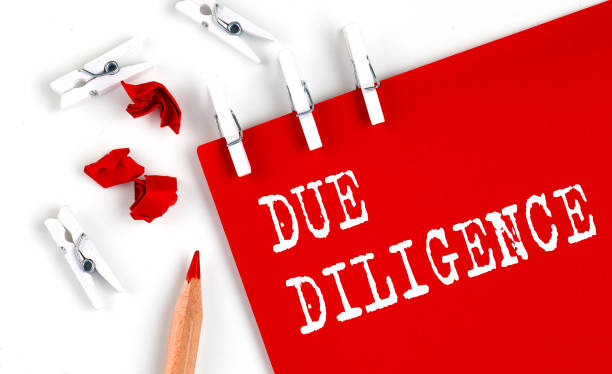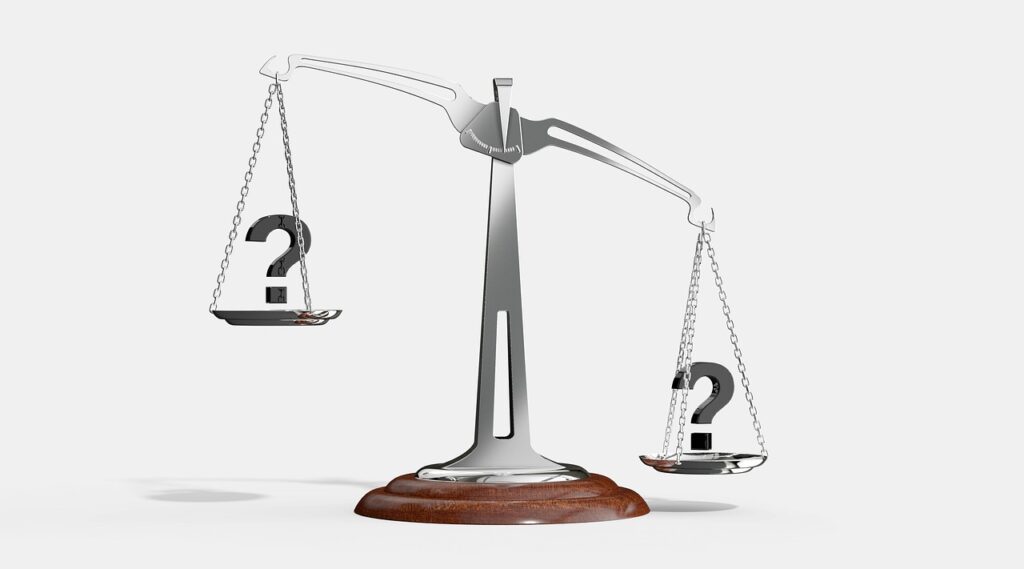Patent due diligence can be a cost-effective and important tool for your business. It allows you to determine the value of your patent portfolio and whether you are able to monetize them through licensing, enforcement, or divestment. It also allows you to mitigate the risks of infringement posed by the patents owned by competitors or other parties. For example, diligence can help you determine how to respond to a cease and desist or reduce your exposure for damages if a willful infringement is found.
IP due diligence can be a time-consuming task that involves multiple team members. To make your due diligence more efficient, define goals and prioritize them accordingly. This will make the entire procedure smoother for everyone involved.

Definitions
When conducting patent due diligence, it’s essential to comprehend the various definitions of terms used. Doing this will guarantee your team conducts an exhaustive investigation and makes informed decisions for your business.
Level 1: Verify Ownership and Chain of Titles
At this step, you should verify whether the IP rights belong to the company and that no other party has a legitimate claim to ownership. Checking CarFax records as well as public records can confirm the current status of intellectual property rights.
Once approved, review any pending or issued patents to guarantee they remain in good standing with the USPTO. This is especially important for international patents which often need further investigation.
Verifying a patient’s status through the USPTO’s Public PAIR system requires some digging. You may also look at an inventor’s file wrapper to confirm they’ve provided all pertinent data.
Public PAIR is an online database maintained by the United States Patent and Trademark Office (USPTO). It provides information on patent applications and granted USPTO patents.
The system allows users to view and retrieve various documents related to patent applications and granted patents. Users can search specific patent applications and patents using various search criteria such as the application or publication number of the patent, the inventor’s name or the attorney docket.
The Public PAIR system allows users to access a wide range of documents and information once a patent application is located.
Application Status
Users are able to track the status of an application for a patent, such as whether it’s pending, abandoned or granted.
Application Documents
These include the application, any amendments to the application, the response to Office Actions and correspondence between the USPTO and the applicant.
Public PAIR provides access to the history of prosecution for a patent application. This includes communication between the patent applicant and the examiner. It also includes office actions and responses.
Public Documents
Users are able to view documents that have been published in relation to the patent application. For example, the publication of the patent application which is made public 18 months following the filing.
Patent Grant
Users can access granted patent documents including granted patent specifications and claims.
Level 2: Confirm Ownership and Ownership Rights
When merging two companies, it is essential to verify the intellectual property rights belong to both parties. This involves reviewing agreements between inventors and the company as well as any assignment documents. Furthermore, government grants or contracts might have been obtained or accepted by the business in question, in addition to prior art searches conducted or received by them.
Furthermore, you should investigate any litigation history of the patents-at-issue to identify hidden issues and prevent future lawsuits. This involves digging up and inspecting documents related to patents such as licensing agreements, confidentiality agreements, employee assignment agreements, publications, and internal correspondence. Since this may be a time-consuming step in your investigation, consider creating a separate due diligence checklist for this task in order to thoroughly examine all patents involved.
Scope of protection

The scope of protection refers to the exclusive rights a patent grants its holder, determined according to European Patent Convention (EPC) and Protocol on Interpretation guidelines that aim to ensure fairness to patentees while giving the public reasonable certainty as to what those claims cover.
When interpreting a patent’s scope, courts must interpret its claims – both technical and non-technical terms – according to the EPC and Protocol on Interpretation. Patent claims are essential components, so they should be carefully drafted so they are easily comprehendible by third parties without undue delay.
It can be a complex issue to determine the scope of a patent, yet it is essential for accurate determination and interpretation. The claims should be written so that both technical and non-technical aspects are clearly identified and described so any device or process which satisfies all elements of each claim would be considered to infringe on that particular one.
It is common for patents to contain multiple claims, each defining a distinct property right. This provides inventors with protection on various aspects of their invention as well as specific features of the product that is put on the market.
Thus, even if one of these broad claims is challenged by a competitor, other more specific assertions will not necessarily be invalidated.
It is essential to clearly define the scope of a patent in its original application and then review this scope as part of an ongoing due diligence exercise. Doing this ensures that not only does the protection provided by the patent meet appropriate criteria but also safeguards the interests of investors or buyers.
Validity
Patents are an invaluable asset in safeguarding intellectual property. Unfortunately, they can also be subject to infringement, making it essential to conduct a comprehensive patent due diligence analysis before concluding a deal or signing an agreement.
Generally, the validity of a patent is determined by assessing its Allowable Subject Matter. This is typically done by reviewing the claims in the patent and comparing them with any newly discovered prior art.
A valid patent must be useful, novel and unobvious. These criteria are usually evaluated by an experienced technical expert familiar with the technology being patented.
For instance, a patent that describes an improved method of manufacturing may be invalid if it does not satisfy the use, novelty, and obviousness criteria. Furthermore, in order for the patent to become valid and enforceable, there must also be sufficient resources allocated towards its execution.
Invalidity is a complex subject that may seem confusing to both companies and attorneys alike. To fully grasp how the standard of proof applies and why there is a statutory presumption of validity in place, one must understand how it was decided upon.
The standard of proof for patent validity relies on a balance between the presumption of validity and the need to demonstrate that claims made in the patent are more likely than not legitimate. Currently, this standard is known as “clear and convincing evidence.”
This standard is higher than simply more likely than not, yet still lower than “beyond a reasonable doubt.” The Supreme Court is currently reviewing this issue and it remains uncertain what should be applied.
An attorney conducting a patent validity analysis will review the application’s specifications and claims in detail, then compare any newly discovered prior art with the patent’s Allowable Subject Matter to provide an opinion as to whether the patent is valid or invalid.

Enforceability
Enforceability of a patent refers to the ability to exercise the rights granted by it in accordance with its terms. It’s defined as “the capacity for someone who has agreed to an act to be made legally accountable and ordered to comply.”
Many factors can affect a patent’s enforceability, such as any defects in its claims. Defects could significantly reduce its value within the title chain and make it more challenging to defend in court.
Enforceability also includes a party’s right to sue for infringement if it believes another party has infringed upon its intellectual property. This can be done by filing a civil lawsuit in federal court.
A pre-litigation strategy can be utilized to attempt to reach a settlement before filing for litigation. This usually works because it places pressure on the other party to accept an amicable resolution so that there will be no trial and associated expenses.
When a company sells its IP portfolio, the buyer typically performs patent due diligence on the assets. This analysis allows them to assess both technical and legal parameters surrounding a patent in order to make informed business decisions.
Analyzing a company’s patent filing history, specifications, and claims, as well as how certain claim terms could or should be interpreted in court, is essential before purchasing assets or licensing them for use. This evaluation should be done before any decision is made on what uses to put the patents.
The enforceability of a patent depends on the legal and technical parameters surrounding its invention, which are clearly outlined in its claims. A patent holder can protect their intellectual property rights by sending a cease and desist letter to an infringer or filing a suit in federal court.
Prior art
Before applying for a patent, you must demonstrate that your invention is both new and non-obvious. To do this, conduct a prior art search and examine all potential sources of information about your invention.
Information that may qualify as prior art includes published literature, public disclosures, and patent documents. But the broadest category of prior art refers to any publicly accessible or published information that was available before a patent application was filed.
Examples of prior art include existing products, scientific publications, textbooks and newspaper articles. These documents serve as evidence of an invention’s existence before it was patented and commercially available.
Other examples of this involve information that was kept private from the public, such as trade secrets or private data. In these instances, it can be difficult to prove that this data wasn’t accessible before a patent application was filed.
Even with the challenges, conducting a comprehensive prior art search before filing for patent protection is still necessary. Doing this will help determine the novelty of your invention and increase the chance that it will be granted protection.
A successful patent due diligence procedure typically involves a collaborative team approach. This means that top management, tech specialists, law professionals, and patent professionals must all be involved in the procedure for it to be successful.
Once you have your list of subject matters, you must determine the protection scope for each product or technology. This will let you decide how many patents need reviewing and possibly perform validity and infringement analyses on these patents as well. Depending on how complex this process is, this could take a considerable amount of time.
The Importance of a Patent Due Diligence
Here are some of the reasons why patent due diligence is essential:
- Patent due diligence protects against possible legal issues. It ensures a valid and enforceable patent. A thorough investigation can identify legal issues and potential infringements which could lead to legal problems.
- Evaluation of the strength and scope of the patent. A patent due diligence procedure evaluates a patent’s strength, scope, and ability to protect an invention. This information is vital when negotiating license agreements or deciding whether to invest or acquire a business.
- Identifying potential revenue streams is possible thorough patent due diligence. This information is crucial when determining the value of a patent.
- Due diligence helps investors and companies make informed decisions: The information provided by due diligence is critical for making informed decisions on whether or not to acquire or invest in a patent. It allows them to assess the risks and rewards of a patent.

